
Expressionism - IV
Franz Marc
1880 – 1916

Franz Moritz Wilhelm Marc (8 February 1880 – 4 March 1916) was a German painter and printmaker, one of the key figures of German Expressionism. He was a founding member of Der Blaue Reiter (The Blue Rider), a journal whose name later became synonymous with the circle of artists collaborating in it.
His mature works mostly depict animals, and are known for bright colouration. He was drafted to serve in the German Army at the beginning of World War I, and died two years later at the Battle of Verdun.
In the 1930s, the Nazis named him a degenerate artist as part of their suppression of modern art. However, most of his work survived World War II, securing his legacy. His work is now exhibited in many eminent galleries and museums. When up for auction, his major paintings attract large sums, with a record of £42,654,500 for Die Füchse (The Foxes).

Franz Marc. Portrait of Violette Heymann, 1910

Franz Marc. Der Traum, The Dream (1912)

Franz Marc. Träumendes Pferd, Dreaming Horse (1913)

Franz Marc. Tierschicksale, Fate of the Animals (1913)

Franz Marc. Der Turm der blauen Pferde, The Tower of Blue Horses (1913)

Franz Marc. Die Füchse, The Foxes (1913)
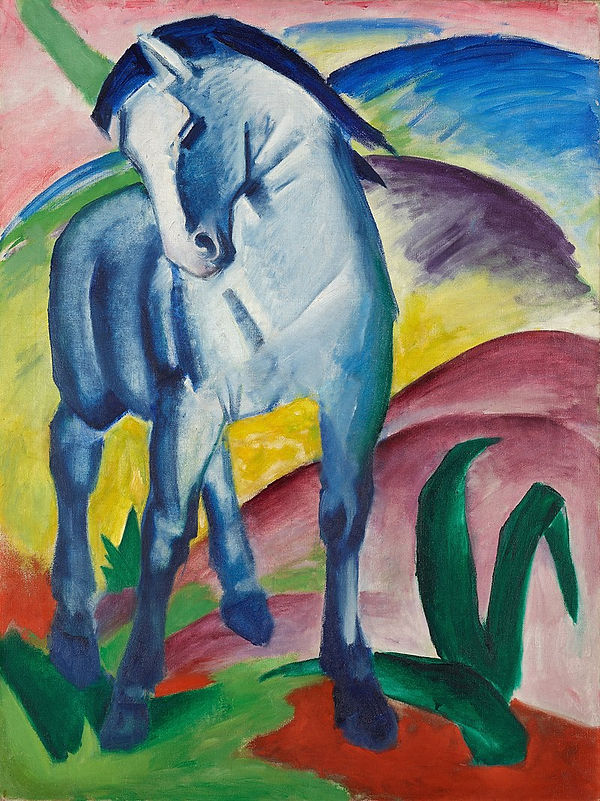
Franz Marc. Blue Horse I (1911)

Franz Marc. The Large Blue Horses (1911)

Franz Marc. The Yellow Cow (1911)

Franz Marc.Knabe mit Lamm; Der gute Hirte, Young Boy with a Lamb; The Good Shepherd (1911)
Karl Schmidt-Rottluff
1884 – 1976

Karl Schmidt-Rottluff
Karl Schmidt-Rottluff (Karl Schmidt until 1905; 1 December 1884 – 10 August 1976) was a German expressionist painter and printmaker; he was one of the four founders of the artist group Die Brücke.


KARL SCHMIDT-ROTTLUFF:
CONVERSATION ABOUT DEATH. 1920.
Munich. Staatsgalerie Moderner Kunst

Après le bain. Karl Schmidt-Rottluff. 1912

“Nude,” a 1914 painting by Karl Schmidt-Rottluff. Neue Galerie, New York

Karl Schmidt-Rottluff. 1914. Neue Galerie, New York
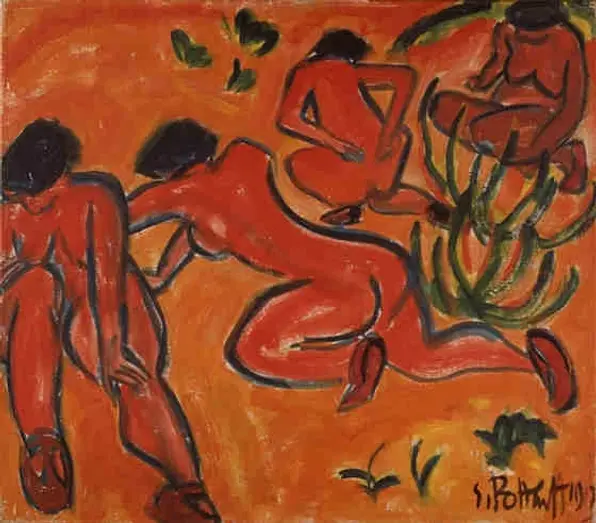
Karl Schmidt-Rottluff, Bathers, 1913

Karl Schmidt-Rottluff, Three Nudes, 1913

Karl Schmidt-Rottluff, Nude, 1913

Karl Schmidt-Rottluff – schmidt-rottluff double portrait and l

Woman with a Bag by Karl Schmidt-Rottluff (1915)
Julius Pincas
1885 – 1930

Julius Mordecai Pincas
(March 31, 1885 – June 5, 1930), known as Pascin (pronounced [pas.kin]; erroneously French: [pas.kɛ̃] or [pa.sɛ̃]), Jules Pascin, or the "Prince of Montparnasse", was a Bulgarian artist known for his paintings and drawings. He later became an American citizen. His most frequent subject was women, depicted in casual poses, usually nude or partly dressed.
Pascin was educated in Vienna and Munich. He traveled for a time in the United States, spending most of his time in the South. He is best known as a Parisian painter, who associated with the artistic circles of Montparnasse, and was one of the emigres of the School of Paris. Having struggled with depression and alcoholism, he died by suicide at the age of 45.
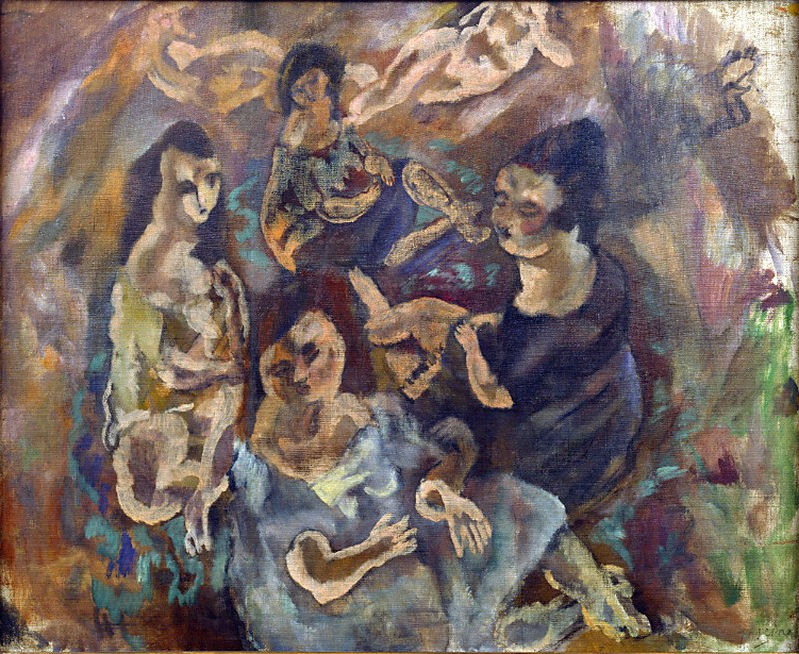
Les petites américaines (Little American Girls), 1916

Hermine in Bed

Portrait of Lucy Krohg, c. 1925
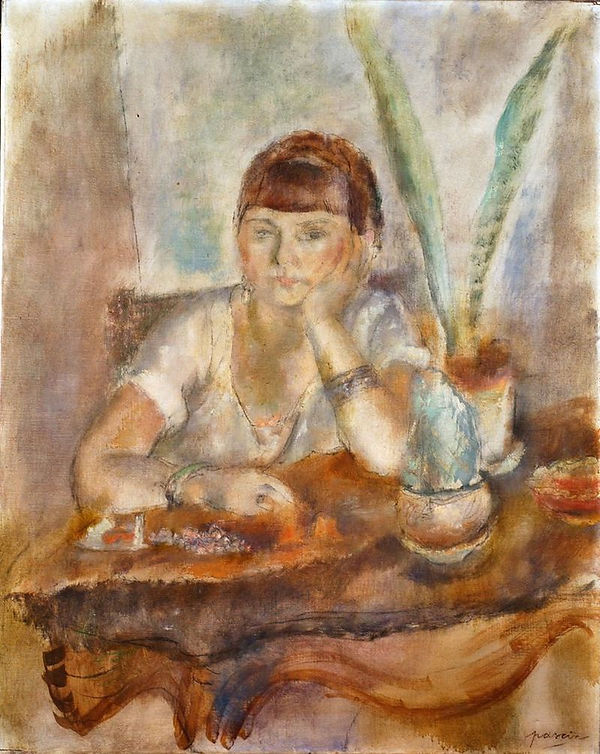
Portrait of Mimi Laurent, c. 1927–28

Jules Pascin - La Mélancolique 1909

Nude Arm Raised
By Jules Pascin

Nude. Brunette with Blue Necklace by Jules Pascin

Hermine David at the Table by Jules Pascin
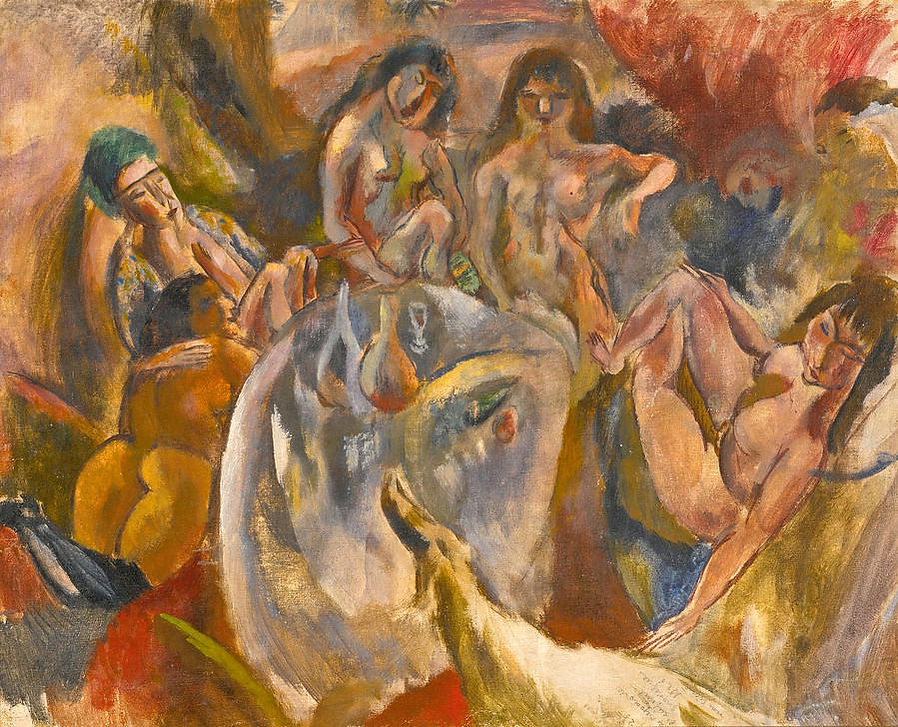
Waiting for the Prodigal Son by Jules Pascin

Hermine David in the Studio by Jules Pascin

Nude on a Divan by Jules Pascin

Nude. Rebecca Couchée by Jules Pascin

Woman Lying Down with Her Arms Raised by Jules Pascin

The Siesta by Jules Pascin

Nude Model by Jules Pascin

Hermine David and Friend by Jules Pascin

Femme en Chemise Bleue by Jules Pascin

In the Hotel Room by Jules Pascin

Nude in an Armchair 1912 by Jules Pascin

Jules Pascin. Two Nudes–One Standing, One Sitting
1913

Jules Pascin Two Standing Nudes (Deux nus debout) 1914
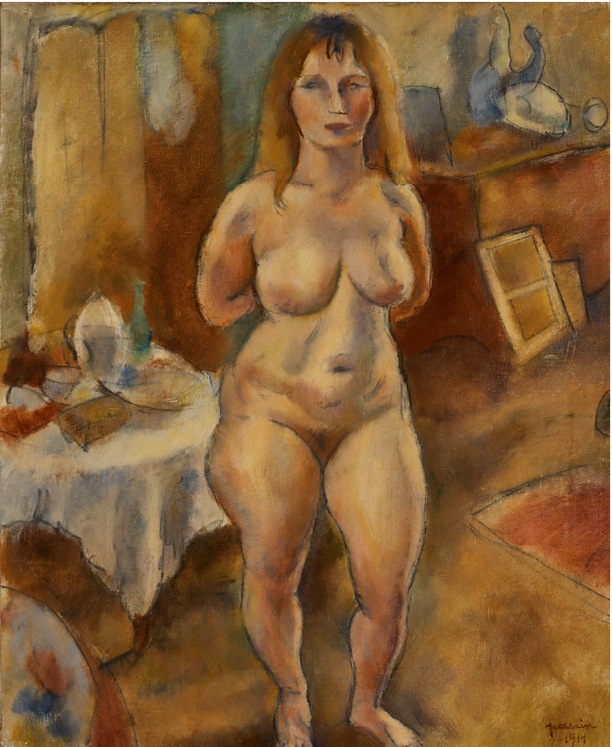
Jules Pascin. Standing Nude in the Studio (Nu debout à l'atelier), 1914
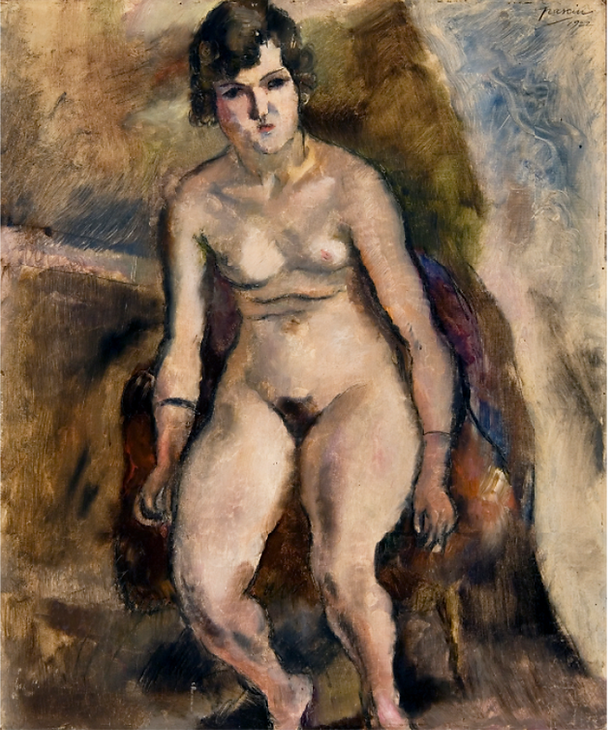
Jules Pascin. Nude Seated on a Chair. 1922.
Marc Chagall
1887 – 1985

Marc Chagall (born Moishe Shagal; 6 July [O.S. 24 June] 1887 – 28 March 1985) was a Russian-French artist. An early modernist, he was associated with several major artistic styles and created works in a wide range of artistic formats, including painting, drawings, book illustrations, stained glass, stage sets, ceramics, tapestries and fine art prints.
Chagall was born in 1887 into a Jewish family near Vitebsk, today in Belarus, but at the time in the Pale of Settlement of the Russian Empire. Before World War I, he travelled between Saint Petersburg, Paris, and Berlin. During this period he created his own mixture and style of modern art based on his idea of Eastern Europe and Jewish folk culture. He spent the wartime years in his native Belarus, becoming one of the country's most distinguished artists and a member of the modernist avant-garde, founding the Vitebsk Arts College. He later worked in and near Moscow in difficult conditions in a tough time in Russia, before leaving again for Paris in 1923. During World War II, he escaped occupied France to the United States, where he lived for 7 years in New York City before returning to France in 1948.
Art critic Robert Hughes referred to Chagall as "the quintessential Jewish artist of the twentieth century". According to art historian Michael J. Lewis, Chagall was considered to be "the last survivor of the first generation of European modernists". For decades, he "had also been respected as the world's pre-eminent Jewish artist". Using the medium of stained glass, he produced windows for the cathedrals of Reims and Metz as well as the Fraumünster in Zürich, windows for the UN and the Art Institute of Chicago and the Jerusalem Windows in Israel. He also did large-scale paintings, including part of the ceiling of the Paris Opéra.
He had two basic reputations, writes Lewis: as a pioneer of modernism and as a major Jewish artist. He experienced modernism's "golden age" in Paris, where "he synthesized the art forms of Cubism, Symbolism, and Fauvism, and the influence of Fauvism gave rise to Surrealism". Yet throughout these phases of his style "he remained most emphatically a Jewish artist, whose work was one long dreamy reverie of life in his native village of Vitebsk." "When Matisse dies," Pablo Picasso remarked in the 1950s, "Chagall will be the only painter left who understands what colour really is".
%2C_.jpg)
Marc Chagall, 1911–12, The Drunkard (Le saoul)

Marc Chagall, 1911–12, Le saint voiturier (The Holy Coachman)

Marc Chagall, 1911, I and the Village

Marc Chagall, 1911, A la Russie, aux ânes et aux autres (To Russia, Asses and Others)

Marc Chagall, 1912, The Fiddler, an inspiration for the musical Fiddler on the Roof
.jpg)
Marc Chagall, 1912, Le Marchand de bestiaux (The Drover, The Cattle Dealer)

Marc Chagall, 1913, Paris par la fenêtre (Paris Through the Window), Solomon R. Guggenheim Museum, New York

Marc Chagall, 1913, La femme enceinte (Maternité)

MARC CHAGALL:
THE THREE ANGELS ARE RECEIVED BY ABRAHAM. 1931. Nice. Musée National Chagall
Marc Chagall
Drawings for the Bible
1931-1939

The Dove of the Ark

Noah Drunk

Abraham mourning for the death of Sarah

Moses and Aaron before Pharoah
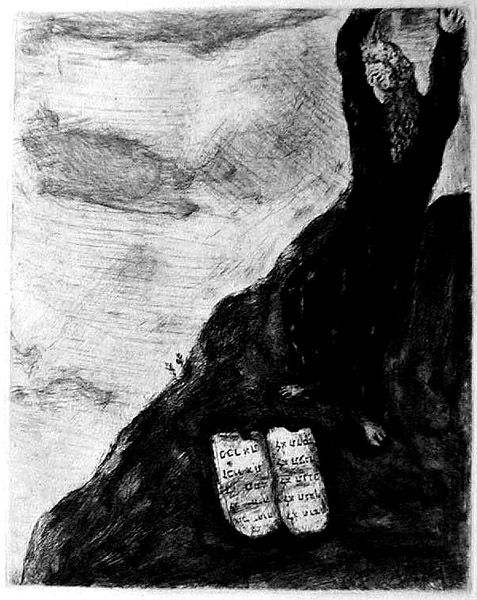
Moses breaking the tablets of the Law

The Israelites Cross the Jordan

Joshua before the Angel with the sword

Joshua reads the words of the law to the people

Samson and Delilah

Hannah prays to the Lord

David before Saul

Debora la Prophetesse

Disobedient Prophet killed by a Lion

Elijah on Mt. Carmel

The Vision of Isaiah

The Deliverance of Jerusalem

Man's steps guided by the Lord

Isaiah's Prayer

Marc Chagall
Stained glass window for the synagogue of the Hadassh Hebrew University Medical Center in Jerusalem.
The names of the the twelve sons are: Reuben, Simeon, Judah, Levi, Naphtali, Dan, Asher, Gad, Issachar, Zebulun, Benjamin and Joseph. Upon Jacob’s death, the land of Israel was divided amongst his twelve sons. These divisions became the twelve tribes of Israel.

Marc Chagall
Stained glass window for the synagogue of the Hadassh Hebrew University Medical Center in Jerusalem.
.jpg)
Marc Chagall
Stained glass window for the synagogue of the Hadassh Hebrew University Medical Center in Jerusalem.
.jpg)
Marc Chagall
Stained glass window for the synagogue of the Hadassh Hebrew University Medical Center in Jerusalem.
.jpg)
Marc Chagall
Stained glass window for the synagogue of the Hadassh Hebrew University Medical Center in Jerusalem.
.jpg)
Marc Chagall
Stained glass window for the synagogue of the Hadassh Hebrew University Medical Center in Jerusalem.
.jpg)
Marc Chagall
Stained glass window for the synagogue of the Hadassh Hebrew University Medical Center in Jerusalem.

The Juggler
Marc Chagall
1943

Clock with Blue Wing
Marc Chagall

Marc Chagall
Stained glass window for the synagogue of the

For Vava
Marc Chagall
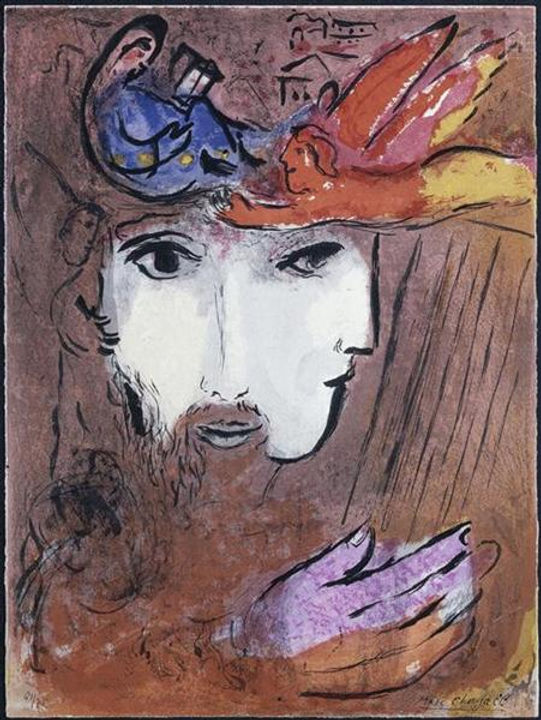
David and Bathsheba
Marc Chagall
Georg Scholz
1890 – 1945
Georg Scholz (October 10, 1890 – November 27, 1945) was a German painter, member of the New Objectivity movement.
Scholz was born in Wolfenbüttel and had his artistic training at the Karlsruhe Academy, where his teachers included Hans Thoma and Wilhelm Trübner. He later studied in Berlin under Lovis Corinth. After military service in World War I lasting from 1915 to 1918, he resumed painting, working in a style fusing cubist and futurist ideas.
In 1919 Scholz became a member of the Communist Party of Germany, and his work of the next few years is harshly critical of the social and economic order in postwar Germany. His Industrial Farmers of 1920 is an oil painting with collage that depicts a Bible-clutching farmer with money erupting from his forehead, seated next to his monstrous wife who cradles a piglet. Their subhuman son, his head open at the top to show that it is empty, is torturing a frog. Perhaps Scholz' best-known work, it is typical of the paintings he produced in the early 1920s, combining a controlled, crisp execution with corrosive sarcasm.
Scholz quickly became one of the leaders of the New Objectivity, a group of artists who practiced a cynical form of realism. The most famous among this group are Max Beckmann, George Grosz and Otto Dix, and Scholz's work briefly vied with theirs for ferocity of attack. By 1925, however, his approach had softened into something closer to neoclassicism, as seen in the Self-Portrait in front of an Advertising Column of 1926 and the Seated Nude with Plaster Bust of 1927.
In 1925, he was appointed a professor at the Baden State Academy of Art in Karlsruhe, where his students included Rudolf Dischinger. Scholz began contributing in 1926 to the satirical magazine Simplicissimus, and in 1928 he visited Paris where he especially appreciated the work of Bonnard.
With the rise to power of Hitler and the National Socialists in 1933, Scholz was quickly dismissed from his teaching position. Declared a Degenerate Artist, his works were among those seized in 1937 as part of a campaign by the Nazis to "purify" German culture, and he was forbidden to paint in 1939.
In 1945, the French occupation forces appointed Scholz mayor of Waldkirch, but he died that same year, in Waldkirch.

Selbstbildnis vor der Litfaßsäule
(Selfportrait in front of the advertising pillar)
Georg Scholz
1926

Kakteen und Semaphore
(Cacti and semaphores)
Georg Scholz
1923

Zeitungsträger. Um 1921
(Paper deliverer Zeitungsträger. Ca. 1921)
Georg Scholz

Industriebauern
(Industriebauern)
Georg Scholz
1920

Die Schwestern
(The sisters)
Georg Scholz
1928

Landschaft bei Berghausen
(Landscape near Berghausen)
Georg Scholz
1924
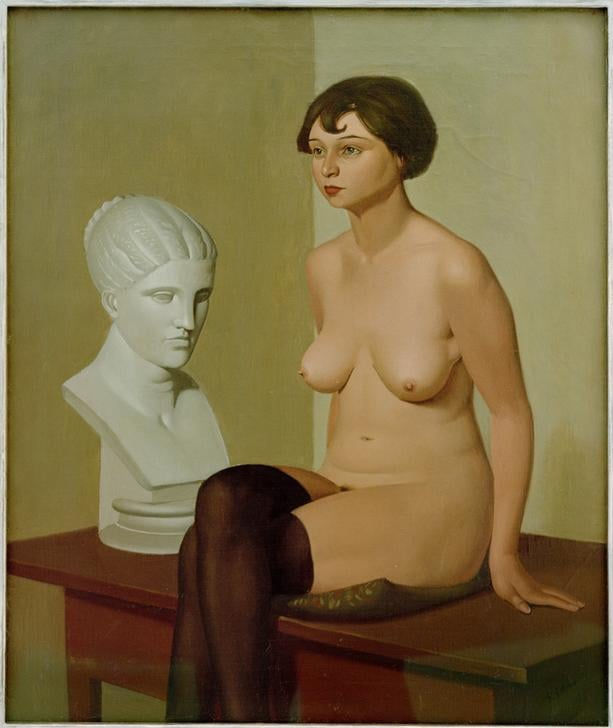
Weiblicher Akt mit Gipskopf
(Female nude with plaster head)
Georg Scholz
1927
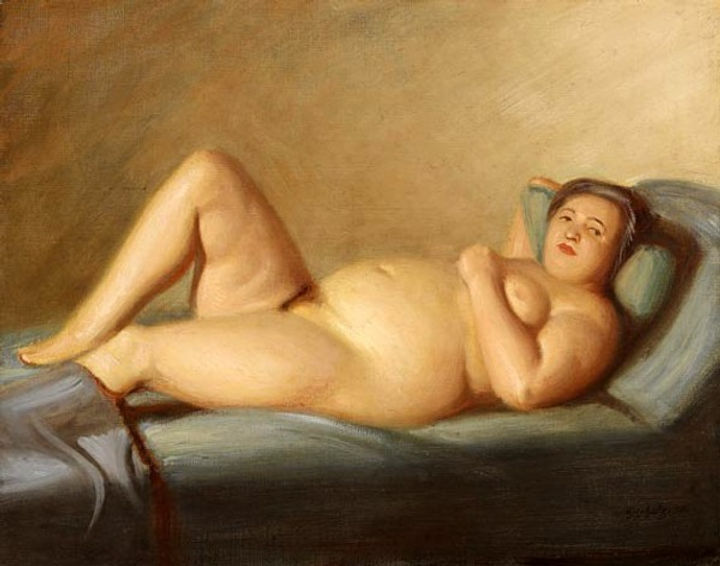
Georg Scholz
Reclining Nude
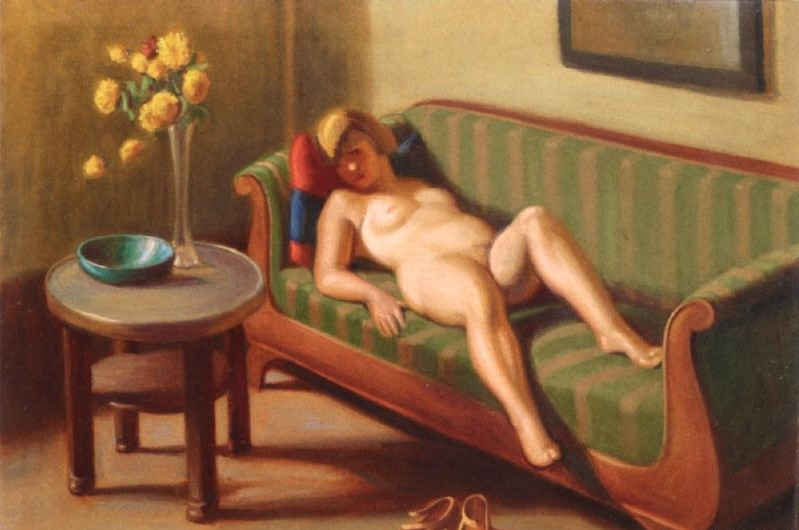
Nude on a Sofa
Georg Scholz

Reclining Nude
Georg Scholz
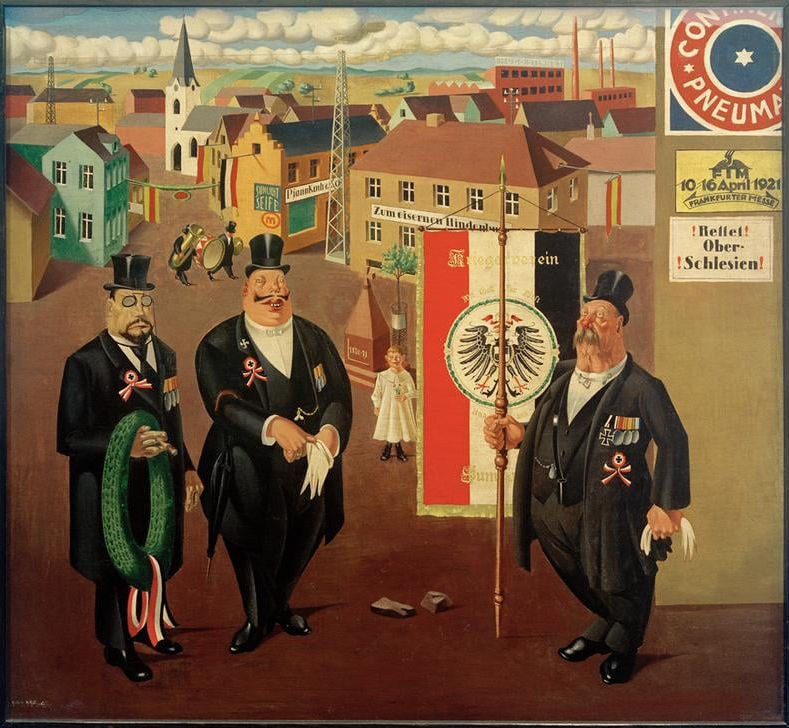
Kriegerverein' by Georg Scholz

A Small Town
Georg Scholz

Petite ville du Pays de Bade le jour
Georg Scholz

Of Things to Come
Georg Scholz

'Die Herren der Welt' by Georg Scholz